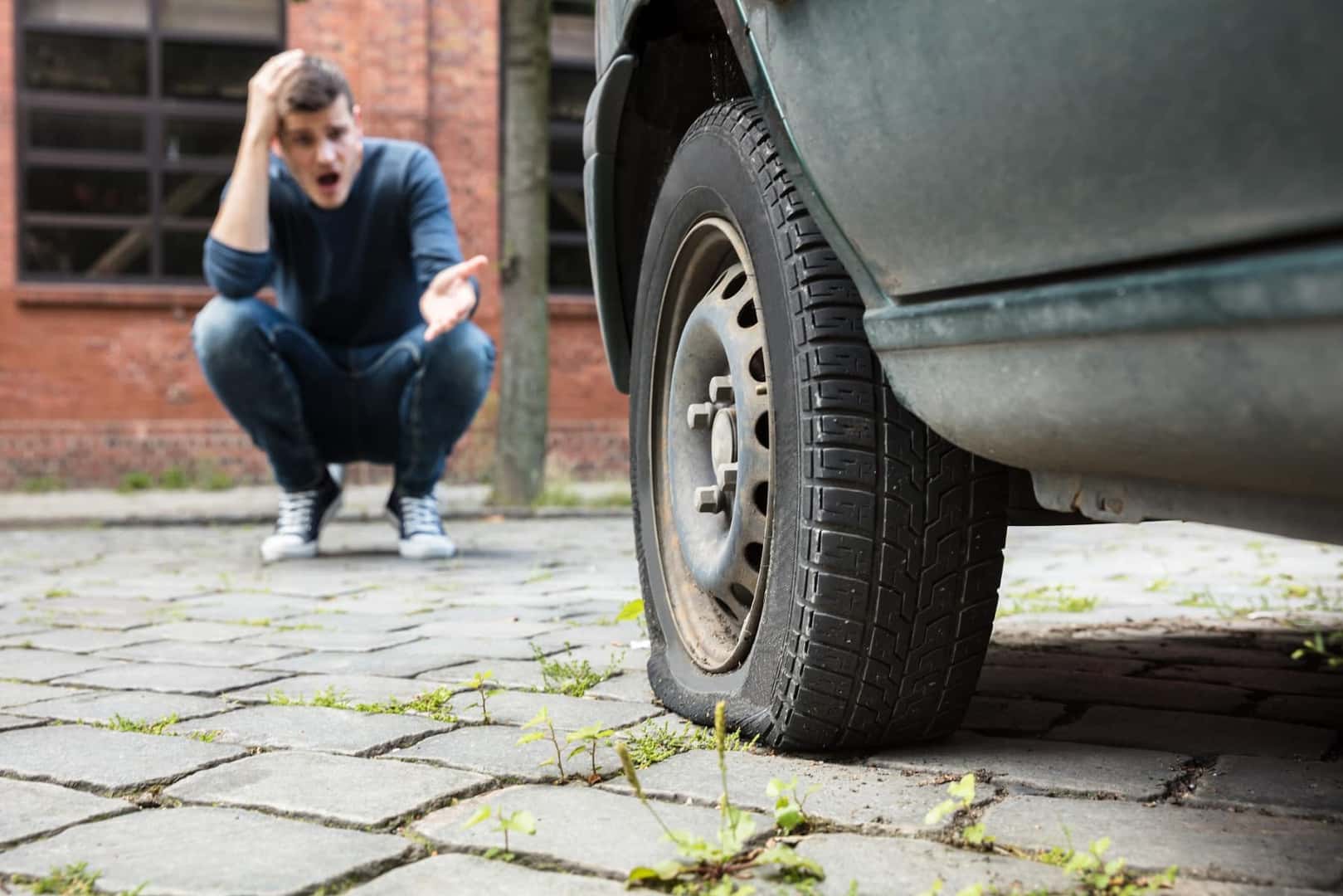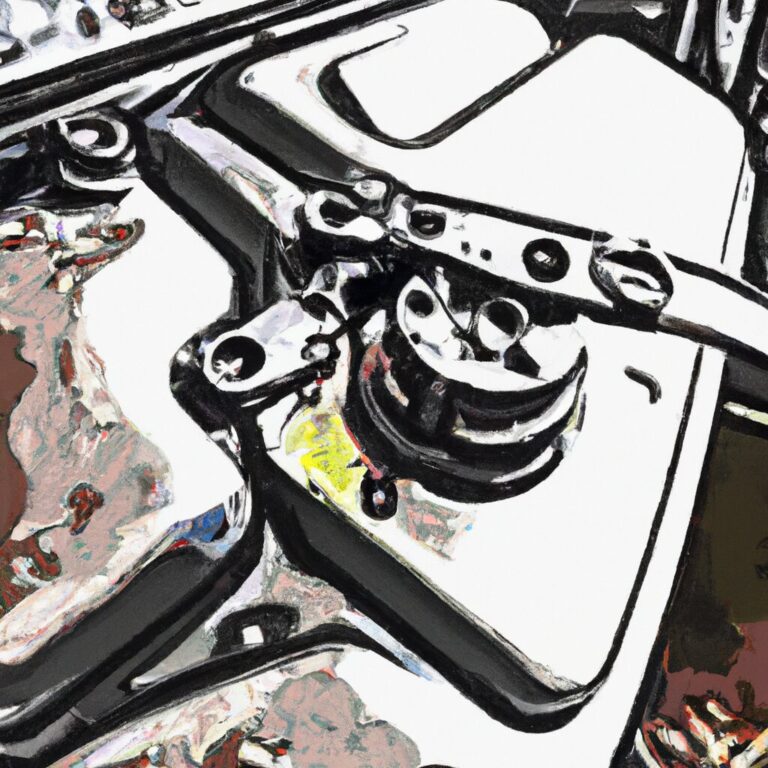How to Flatten a Car Tire
To flatten a car tire, loosen the lug nuts, lift the car, remove the lug nuts and the tire, place the tire on a flat surface, and drive over it. Flattening a car tire can be necessary for a variety of reasons, such as changing a tire or repairing a puncture.
Whatever the reason, it’s important to do it correctly to avoid any damage to the tire or the vehicle. We’ll discuss the step-by-step process for safely flattening a car tire and provide some tips for making the job easier. Whether you’re a seasoned car enthusiast or a novice, this guide will help you navigate the process with confidence and ease.
By following the simple steps outlined here, you can easily flatten a car tire without any hassle or damage.

Credit: www.firestonecompleteautocare.com
Preparation For Flattening A Car Tire
Before you set out to flatten a car tire, it is important to take the necessary steps to ensure a safe and efficient process. This includes gathering the necessary tools and identifying a safe location. By following these steps, you can successfully address the flat tire issue and get back on the road in no time.
Gather Necessary Tools
In order to flatten a car tire, you will need the following tools:
- Tire iron
- Lug wrench
- Jack
- Spare tire
- Tire pressure gauge
These tools are essential for removing and replacing the flat tire.
Identify A Safe Location
Choosing the right location to flatten a car tire is crucial for your safety. Consider the following factors:
- Find a flat and level surface away from traffic.
- Ensure there is enough space around the car to safely work on the tire.
- Park the car in a location visible to other drivers to alert them of your presence.
- Engage the parking brake to prevent any accidental movement of the vehicle.
| Recommended Locations | Avoid |
|---|---|
| Empty parking lots | Busy highways |
| Residential areas with low traffic | Curves or bends in the road |
| Designated roadside emergency areas | Crowded intersections |
By selecting a safe location, you minimize the risk of accidents and make the process of flattening the car tire both safer and more convenient.
Steps To Flatten A Car Tire
Locate The Valve Stem
To begin the process of flattening a car tire, the first step is to locate the valve stem. This is a small, cylindrical rubber or metal component typically found near the edge of the rim. It may be covered with a valve stem cap.
Remove The Valve Stem Cap
Once you have located the valve stem, the next step is to remove the valve stem cap. This cap protects the valve stem from dirt and debris. It should be unscrewed in a counterclockwise direction and set aside in a safe place.
Press The Valve Stem To Release Air
With the valve stem exposed, the final step is to press down on the center of the valve stem with a tool or the tip of a pen to release the air from the tire. Exercise caution during this process to avoid damaging the valve stem.
Using A Tire Pressure Gauge
Using a tire pressure gauge is the most accurate method to flatten a car tire and ensure it meets the recommended pressure levels.
Check The Tire Pressure
Begin by locating the tire pressure specifications in the vehicle owner’s manual or on the sticker inside the driver’s door or fuel filler door. Unscrew the tire’s valve cap and firmly press the tire pressure gauge onto the valve stem to obtain a reading.
Adjust The Tire Pressure As Needed
- If the tire pressure is below the recommended level, add air to the tire by attaching an inflator to the valve stem and filling it until the recommended pressure is reached.
- If the tire pressure exceeds the recommended level, release air by pressing the valve pin in the center of the valve stem to let air escape until the correct pressure is achieved.

Credit: www.vikingmotors.ca
Securing The Car After Flattening The Tire
Once you have successfully flattened the car tire, it is crucial to take a few extra steps to ensure your safety and prevent any accidents. Securing the car properly will give you peace of mind knowing that it won’t roll away unexpectedly while you are attending to the flat tire. Here are two important measures you should take: engaging the parking brake and using wheel chocks.
Engage The Parking Brake
Engaging the parking brake is an essential step to prevent the car from moving while you are working on the flat tire. The parking brake, or emergency brake, helps to keep the car stationary and adds an extra layer of security to your vehicle. To engage the parking brake, follow these simple steps:
- Pull the parking brake lever, usually located either between the driver’s and passenger’s seat or on the left side near the floor.
- Apply steady pressure until the brake engages and the car feels secure.
- Ensure the parking brake is fully engaged by gently trying to move the car. It should remain stationary.
Use Wheel Chocks
Wheel chocks are wedge-shaped blocks that help prevent the car from rolling or moving while the flat tire is being replaced. They provide an added layer of safety and stability to keep your car in place. Here’s how to properly use wheel chocks:
- Identify the wheels diagonally opposite to the flat tire.
- Place the wheel chocks in front and behind these wheels to prevent any unintended movement.
- Position the chocks tightly against the tires and make sure they are securely in place.
- Test the stability of the car by gently pushing it. If it remains immobile, your wheel chocks are properly secured.
By engaging the parking brake and using wheel chocks, you can ensure the car stays in place and prevent any accidents or mishaps while you’re attending to the flat tire. Taking these safety precautions will give you the confidence and peace of mind needed to effectively change your tire without any worries. Remember, safety should always be your top priority.
Seeking Professional Help
Seeking Professional Help:
Contact Roadside Assistance
For immediate assistance with a flat tire, call a reliable roadside assistance service.
Visit A Mechanic
If the tire puncture needs more than a quick fix, take your car to a certified mechanic.
Credit: www.quora.com
Frequently Asked Questions Of How To Flatten A Car Tire
How Do You Deflate A Tire Quickly?
To quickly deflate a tire, use a tire pressure gauge to release the air from the valve stem. Press the gauge onto the stem and hold it until desired pressure is reached.
What Can Make A Tire Go Flat?
Possible causes of a flat tire include punctures from nails or sharp objects on the road. Other reasons include damaged valve stems, a faulty tire seal, or a leaky wheel. Tire pressure loss can also occur due to aging or worn-out tires.
Always inspect your tires regularly and maintain proper inflation.
How Long Does It Take A Tire To Go Flat From A Nail?
A tire can go flat from a nail within a few minutes to a few hours, depending on the size of the nail and the rate of air leakage. It’s crucial to address the issue immediately to prevent further damage.
Regularly inspecting your tires can help prevent potential hazards.
Can A Flat Tire Be Reinflated?
Yes, a flat tire can be reinflated using a portable air compressor or by filling it with compressed air at a gas station. Always check for any signs of damage or punctures before reinflating to ensure safety. Regularly monitor tire pressure to prevent future flats.
How Can I Safely Flatten A Car Tire At Home?
To safely flatten a car tire at home, start by locating the valve stem on the tire and use a flat object, such as a screwdriver, to press the stem to release the air.
What Tools Do I Need To Flatten A Car Tire?
To flatten a car tire, you’ll need basic tools such as a screwdriver, pliers, and a heavy object to puncture the tire, like a nail or sharp object.
Can I Flatten My Car Tire Without Causing Damage?
Flattening a car tire can be done without causing damage by carefully following the steps and avoiding puncturing the tire in a way that cannot be repaired.
Conclusion
To conclude, flattening a car tire may seem like a daunting task, but with the right approach, it can be done smoothly. Remember to be cautious and follow the steps carefully to avoid any accidents or damage. Keep in mind that prevention is always better than cure, so regular tire maintenance and inspections can help you avoid this situation altogether.
Be responsible and take care of your tires to ensure a smooth and safe driving experience.


